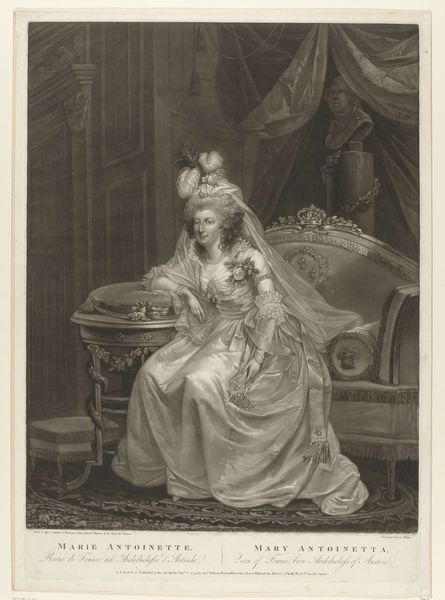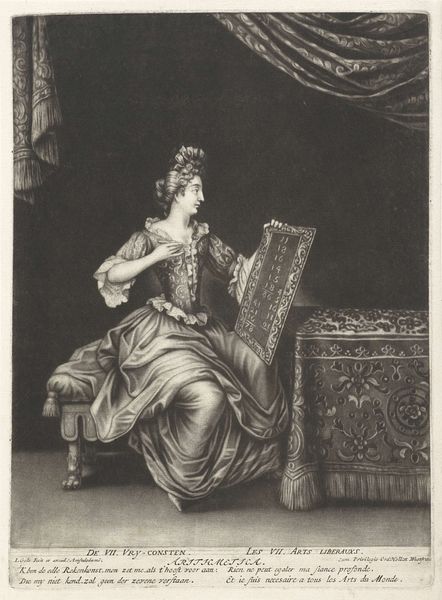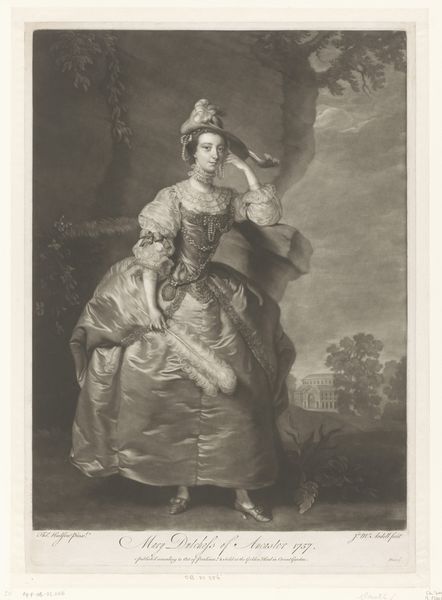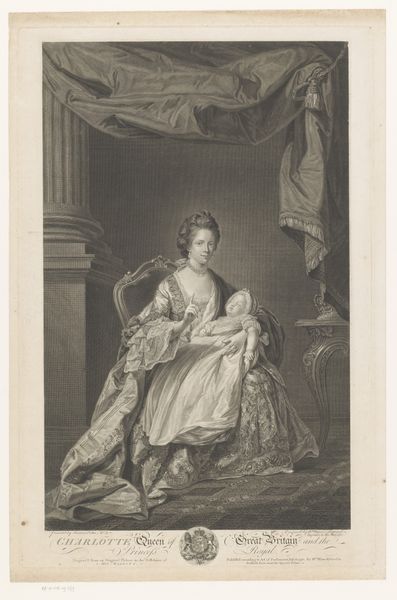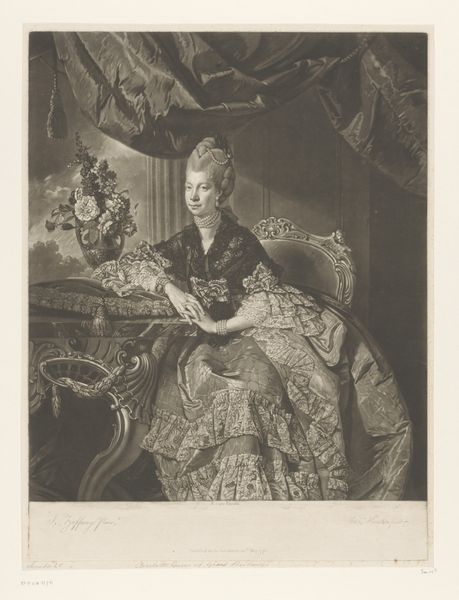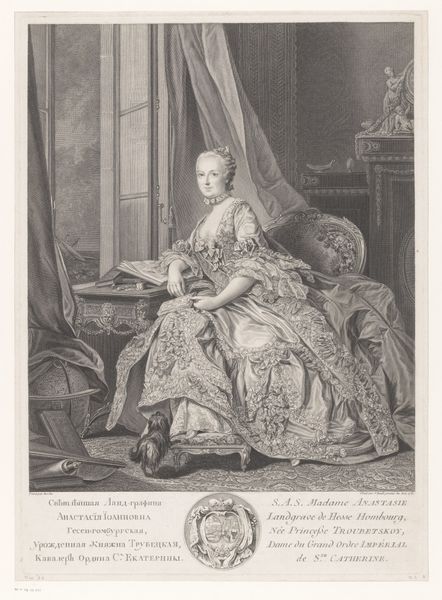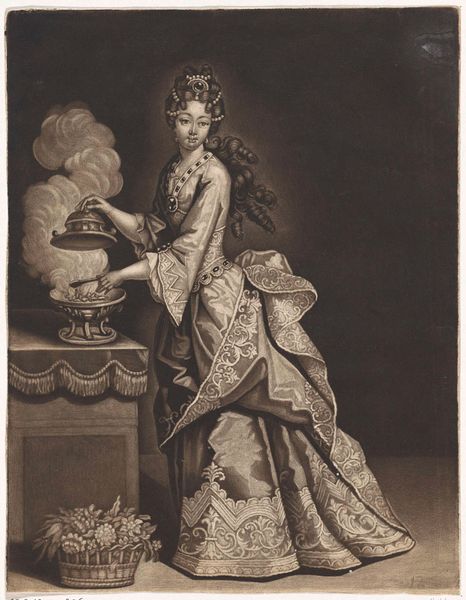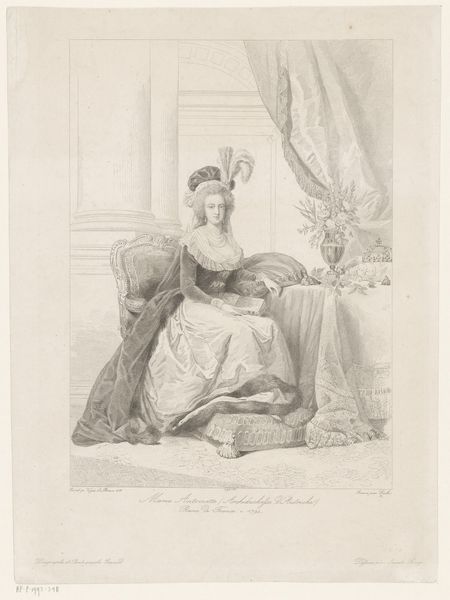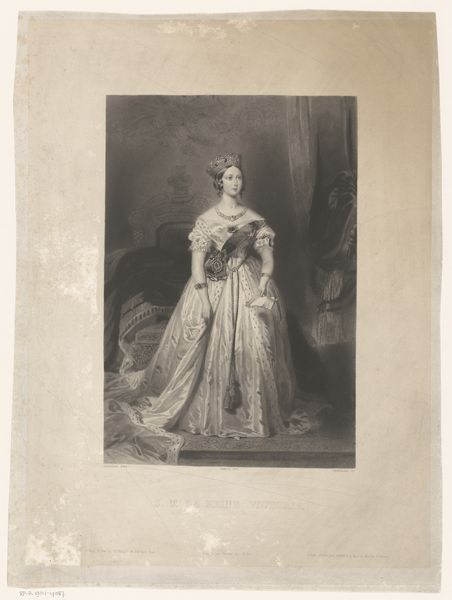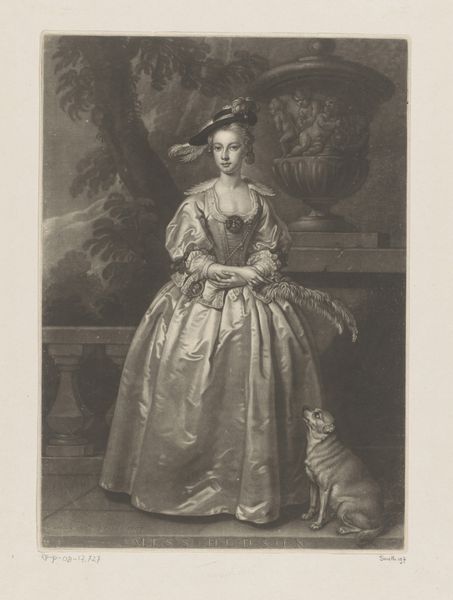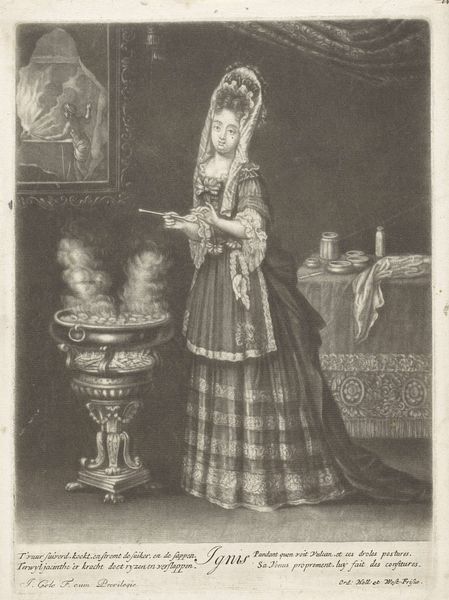
Dimensions: height 626 mm, width 442 mm
Copyright: Rijks Museum: Open Domain
Curator: This delicate engraving presents us with a portrait of Marie-Thérèse-Louise de Savoie-Carignan, Princess of Lamballe. Its creation dates somewhere between 1789 and 1793, a truly tumultuous period in French history. Editor: My first impression is of understated elegance and, dare I say, a hint of melancholy. The monochromatic palette softens what might otherwise be a display of aristocratic ostentation. There’s an ethereal quality about her, enhanced by the diffused light. Curator: That inherent sadness is palpable, knowing the fate that awaited her. This wasn't merely a depiction of nobility; it became an artifact loaded with historical weight. Her serene expression is somewhat haunting given the brutality she ultimately faced during the Revolution. The very act of portraying her solidified her place in the historical narrative, both victim and symbol. Editor: Absolutely. And speaking of symbols, consider the bust of what seems like a classical figure looming in the background – perhaps a deliberate choice. Does it signify enduring values about to be overturned? And her writing desk, of course, speaks to her education and elevated status. Curator: Precisely. Also, that she is at a desk, composing. Princess Lamballe, during the time of her adult life, was Superintendant of the Queen's Household, but perhaps it shows a conscious desire for privacy. I see the way she is framed there, it lends an air of scholarly gentility amidst revolutionary upheaval. What a powerful and intimate contrast. Editor: I’m also drawn to the textures – the way the artist captured the silk of her gown, the softness of her hair. These tactile qualities underscore her humanity. They speak of the embodied, real person rather than an allegorical figure. The artist used the tools of portraiture to memorialize her. The artwork becomes more than a representation; it transforms into a memento, laden with both sorrow and reverence. Curator: Reflecting upon this piece, it makes you consider how art captures and freezes specific cultural anxieties within wider historical currents. Editor: Indeed. It compels us to look at an image of refined grace and to remember, even whisper, the stories etched in history's darker chapters.
Comments
No comments
Be the first to comment and join the conversation on the ultimate creative platform.
